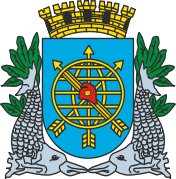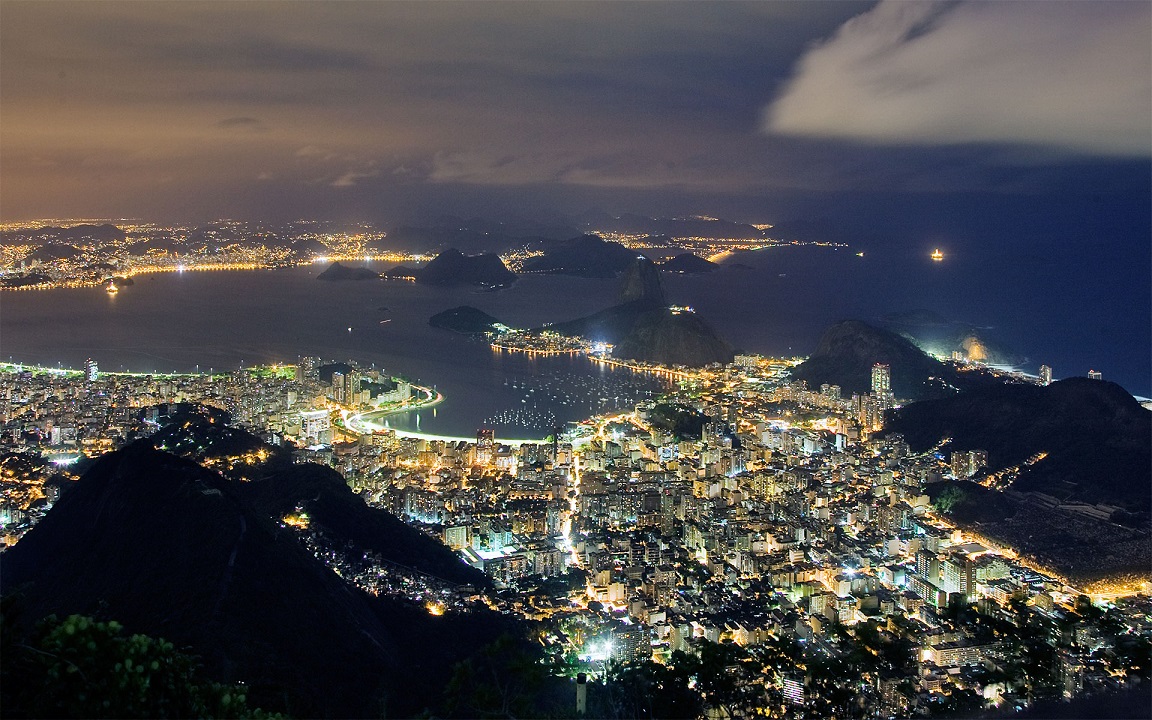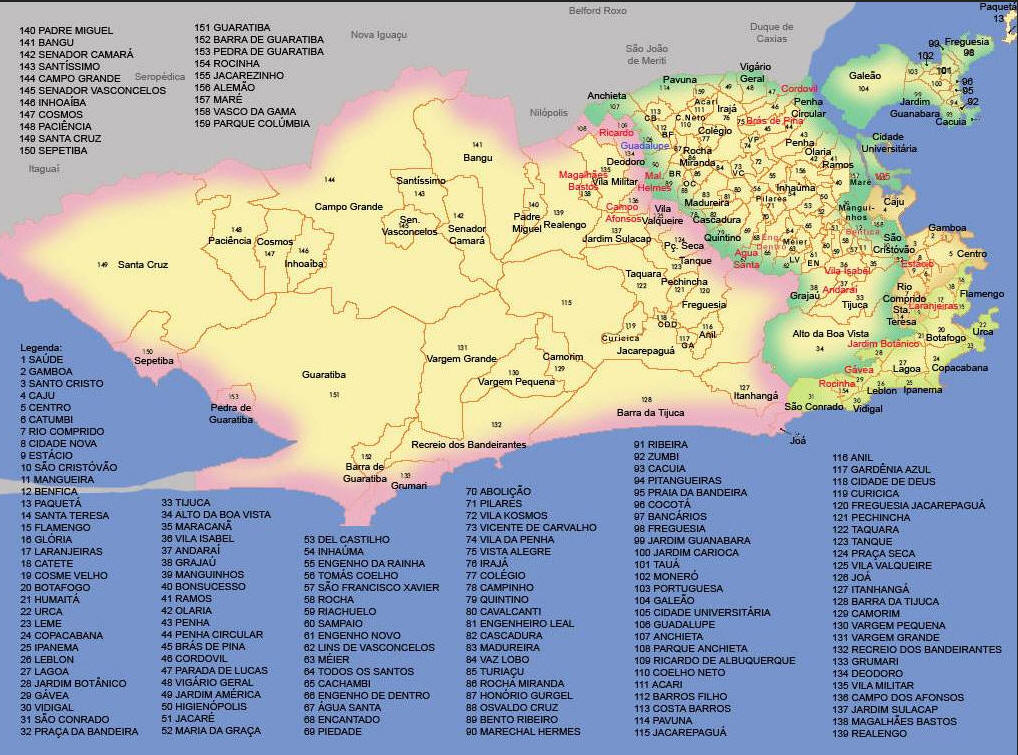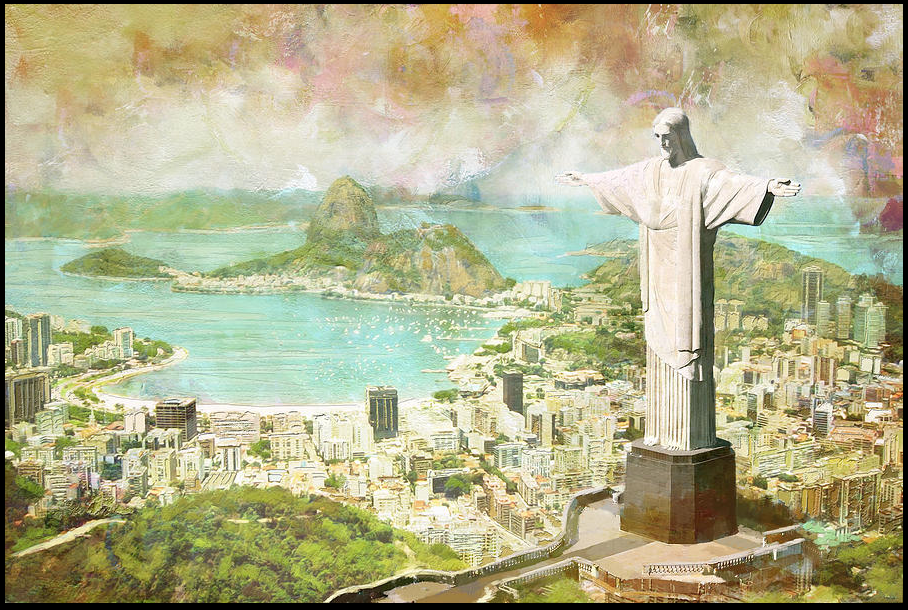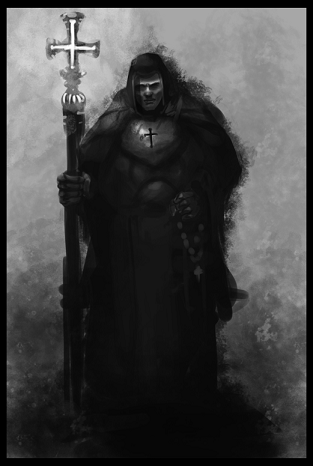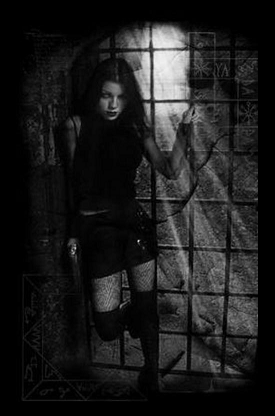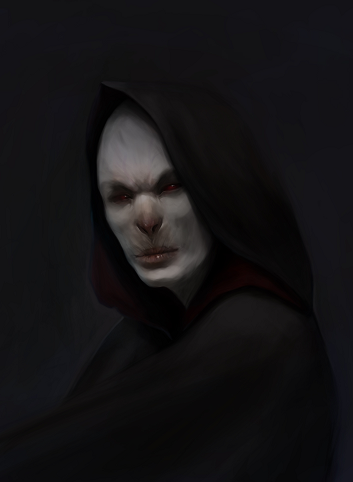Rio de Janeiro: Difference between revisions
| Line 653: | Line 653: | ||
<br> | <br> | ||
---- | ---- | ||
==== Jacarepaguá - West Zone - Rio de Janeiro ==== | ==== <span style="color:#008000;"> '''Jacarepaguá''' - West Zone - Rio de Janeiro ==== | ||
===== Description ===== | ===== Description ===== | ||
Jacarepaguá is located in the West Zone of Rio in the Baixada de Jacarepaguá, between Maciço da Tijuca and the Serra da Pedra Branca. The upper middle class Barra da Tijuca separates the suburb from the sea. Jacarepaguá possesses a land area of 29.27 square miles (75.8 km2), and is the 4th largest neighborhood situated in the West Zone. In 2000, it had a population of 100,822, making it the 9th most populous neighborhood in the city. The suburb is known for large open areas where events and shows, such as the last Rock in Rio, take place. It is also, one of the greenest areas of Rio, with plenty of nature in some of the sub-areas, especially in Vargem Grande and Vargem Pequena. | Jacarepaguá is located in the West Zone of Rio in the Baixada de Jacarepaguá, between Maciço da Tijuca and the Serra da Pedra Branca. The upper middle class Barra da Tijuca separates the suburb from the sea. Jacarepaguá possesses a land area of 29.27 square miles (75.8 km2), and is the 4th largest neighborhood situated in the West Zone. In 2000, it had a population of 100,822, making it the 9th most populous neighborhood in the city. The suburb is known for large open areas where events and shows, such as the last Rock in Rio, take place. It is also, one of the greenest areas of Rio, with plenty of nature in some of the sub-areas, especially in Vargem Grande and Vargem Pequena. | ||
Revision as of 17:59, 27 April 2014
Brasão
Uma citação apropriada
Uma Introdução
- Rio de Janeiro is a city of contradictions for both the living and the dead. Its name is synonymous with sybaritic luxury, but the poverty of most of its seven million people is staggering, and tons of pollutants and human waste are dumped into its picturesque Guanabara Bay every day. Even the city's name is deceiving: It means "River of January" in Portuguese. There is no river here, though: the explorer Goncalho Coelho mistook the bay for the mouth of an estuary in 1502 and no one ever bothered to correct the mistake.
- Rio is a major financial center and a focal point for business and domestic commerce. Many South American corporate headquarters are located in the city, and most foreign companies have their primary headquarters within the city limits. The addition of the Galeao International Airport on nearby Governador Island has done nothing but add to the chaos.
- No longer Brazil's capital, Rio de Janeiro has spent 35 years slipping into a sort of luxurious lassitude. Its upper classes live in nigh-imperial splendor, supported by a booming tourism industry, which in turn fosters a glittering potpourri of nightclubs, discotheques and festivals. Vampires also flock to Rio: The countless tourists ensure that feeding in Rio is virtually effortless. And if elegant seduction of the innocent fails, vampires of less-choosy palates can always stroll down to Rio's expanses of squalid shantytowns and drag faceless victims out from corrugated tin shacks.
- Lasombra influence in Rio stretches back to Coelho's discovery of the site; after all, it was the legendary Archbishop Moncada who bankrolled his expedition. The Toreador arrived scant decades later, with the first exiled Huguenots to build a permanent settlement along the bay. Until gold and gems started flowing through Rio from Minas Gerais in the 1690s, the two clans spatted intermittently.
- With the money, however, came the real wars, wars which lasted until 1807 and the arrival of the exiled Portuguese court fleeing Napoleon. The influx of powerful Kindred of both clans ground the conflict to a quick stalemate, while the city's immense wealth and large transient population made peace a very appealing notion. Eventually, the truce grew into something that bears occasional resemblance to an alliance, based on the sacred tenet of not disturbing the goose that lays the golden (and emerald) eggs.
- So it is here, of all places, that Sabbat Lasombra and Camarilla Toreador have made an unspoken peace. The city has been tacitly declared Carnival for the Kindred: a free city, outside the sect wars and the Jyhad. All vampires are welcome here, provided that they leave their politics behind for the duration of their stay. That is not to say that Rio is safe for vampires - not by any stretch of the imagination; but rather that if a vampire kills another here, it is much more likely to be for reasons of business - or pleasure - than for political gain.
- Vampires of all stripes stroll through Rio's torrid byways, but certain clans are predominant. The Lasombra and Toreador still dominate Rio, conducting the city's affairs (or simply existing) with a style and elegance unknown to more staid regions. Brujah also walk here in abundance; some are descendants of slaves or holdovers from the nights of revolution, while others are drawn by Rio's Santeria rites and subversive blood cults. Malkavians cavort through the riotous night streets, their excesses ignored by the laughing herd; Tremere slink through the shadows, spying and selling their services; Setites hiss from alleyways, offering diversions to satisfy any and all tastes; and even Assamites can be found here, as assassins or as students of Capoiera (a Brazilian martial art).
- For Rio's mortal population, Carnival is the legendary festival that takes place four days prior to Ash Wednesday; for vampires, Carnival is something different. It is the official code of Rio, enforced by centuries-old vampires who, perhaps weary of the wars of their kind, have made the city a playground. In a city where death squads roam the streets to exterminate excess street urchins, there is certainly plenty of food for all. The city is a free port for vampiric goods and services, where deals can be struck and assignations can be made away from the watchful eyes of sect elders. It is in Rio that a Toreador can hire a Tzimisce to flesh-craft his dream lover, or a devout Lasombra can pray at the statue of Christ the Redeemer on Corcovado alongside a Wee Kirk Gangrel.
- As one night expect, such freedoms come at a great price. While the battle lines of the Jyhad have been temporarily erased here, for many vampires that simply means that now their own side can attempt to off them without retribution as well. Some of the child-hunting death squads are actually mercenary gangs of Kindred hunting others of their kind, taking bounties in vitae and gold from anyone willing to hire them. Still, that is part of the exhilaration of Rio: The samba-school dance-parade can hide a half-dozen murders, and Tzimisce "cleaners" take pride in how long they can prolong the process of feeding their victims, one dollop at a time, into the noisome sewage lines that run into the bay.
Humor e Tema: The Mood and Theme of the Marvelous City
Aparência
O clima do Rio
Rio has a tropical savannah climate that closely borders a tropical monsoon climate according to the Köppen climate classification, and is often characterized by long periods of heavy rain from December to March. In inland areas of the city, temperatures above 40 °C (104 °F) are common during the summer, though rarely for long periods, while maximum temperatures above 27 °C (81 °F) can occur on a monthly basis.
Along the coast, the breeze, blowing alternately onshore and offshore, moderates the temp. Because of its geographic situation, the city is often reached, especially during autumn and winter, by cold fronts advancing from Antarctica, causing frequent weather changes. It is mostly in summer that strong showers provoke catastrophic floods and landslides. The mountainous areas register greater rainfall since they constitute a barrier to the humid wind that comes from the Atlantic.
It is said that the city had frost in its past, but it was never confirmed. Some areas within Rio de Janeiro state have snow grains and ice pellets with an even frequency (popularly called granizo, or "hail", although it is in fact melted and refrozen snow falling in the form of a ball—true hail, rather than just icy snow along showers, is much less common). These phenomena are definitely not rare or limited to a few regions, happening in the metropolitan area (including western suburbs of the city itself) at least three times in the 21st century, said to be approximately each two decades or less in some regions. In other areas there is true snowfall more than once in each century, most commonly in the cities of Resende and Itatiaia (in lower latitudes than Rio de Janeiro, but much higher altitudes).
Roughly in the same suburbs corresponding to the March 2012 and February–March 2013 granizo falls (Nova Iguaçu and surrounding areas, including parts of Campo Grande and Bangu), there was a tornado-like phenomenon in January 2011, for the first time in the region's recorded history, causing structural damage and lasting blackouts, but no fatalities. The World Meteorological Organization alerts Brazil, specially its Southeastern region, that events as the catastrophic January 2011 Rio de Janeiro floods and mudslides are not an isolated phenomenon and that Brazil must be prepared for severe weather in the next years. "This (the early 2010s serial devastation in Rio de Janeiro's mesoregions Metropolitana do Rio de Janeiro and Sul Fluminense) was not an isolated event. The events in Brazil confirms a global trend that storms tend to be increasingly strong and in places where it did not take place with the same force", said Rupakumar Kolli, WMO expert on climatological phenomena. In early May 2013, winds registering above 90 km/h (56 mph) also caused lasting blackouts in 15 neighborhoods of the city and three surrounding municipalities, and it killed a person.
The average annual minimum temperature is 21 °C (70 °F), the average annual maximum temperature is 27 °C (81 °F), and the average annual temperature is 23 °C (73 °F). The average yearly precipitation is 1,175 mm (46.3 in). According to INMET, the minimum temperature recorded was 4.8 °C (40.6 °F) in July 1928, in the Campo dos Afonsos bairro (the Portuguese word for neighborhood), and the absolute maximum was 44 °C (111 °F) in February.[27] The lowest temperature ever registered in the 21st century was 8.1 °C (46.6 °F) in Vila Militar, July 2011.[28] Rio de Janeiro lags only after Cuiabá at being the hottest state capital outside Northern and Northeastern Brazil; temperatures below 14 °C (57 °F) happen in a yearly and those below than 11 °C (52 °F) happen in a less than yearly basis, so fazer frio ("making cold" i.e. "weather is getting cold") usually intends for temperatures below 21 °C (70 °F), present in a seasonally basis year-round and common place in mid-to-late autumn, winter and early spring nights.
Temperature also varies according to elevation, distance from the coast, and type of vegetation or land use. Winter, cold fronts and dawn/morning sea breezes bring mild temperatures; cold fronts, the Inter-topical Convergence Zone (in the form of winds from the Amazon Forest), the strongest sea-borne winds (often from an extra-topical cyclone) and summer evapotranspiration bring showers or storms. Thus the monsoon-like climate has dry and mild winters and springs, and very wet and warm summers and autumns. As a result, temperatures over 40 °C (104 °F), that happen about year-round but are more common during the summer, often mean the actual temperature feeling is over 50 °C (122 °F), when there is little wind and the relative humidity percentage is high. In such weather, avoiding dehydration (by high consumption of water and low consumption of sodium), over-exercising and direct exposure to the sun is recommended, especially for children and elders.
There is also a slightly greater seasonal difference in the incidence of solar radiation people receive in Rio de Janeiro in comparison to places in the Northern Hemisphere with similar climate and the same exact latitude as the Earth most closely approaches the Sun only 12 days after the Southern Hemisphere's summer solstice.
Average annual temperature of the sea is 23–24 °C (73–75 °F), from 22 °C (72 °F) in the period July–October to 26 °C (79 °F) in February and March. The wettest and driest months tend to be December and August respectively.
A economia do Rio
Rio de Janeiro has the second largest GDP of any city in Brazil, surpassed only by São Paulo. According to the IBGE, it was approximately US$ 201 billion in 2008, equivalent to 5.1% of the national total. The services sector comprises the largest portion of GDP (65.52%), followed by commerce (23.38%), industrial activities (11.06%) and agriculture (0.04%).
Benefiting from the federal capital position occupied by a long period (1763–1960), the town became a dynamic center administrative, financial, commercial and cultural. Greater Rio de Janeiro, as perceived by the IBGE, has a GDP of US$ 187.374.116.000, constituting the second largest hub of national wealth. Per capita GDP is US$ 11,786. It concentrates 68% of the state's economic strength and 7.91% of all goods and services produced in the country.
Taking into consideration the network of influence exerted by the urban metropolis (which covers 11.3% of the population), this share in GDP rises to 14.4%, according to a study released in October 2008 by the IBGE. For many years brings together the second largest industrial hub of Brazil, with oil refineries, shipbuilding industries, steel, metallurgy, petrochemical, gas, chemical, textile, printing, publishing, pharmaceutical, beverages, cement and furniture. However, the last decades indicated a sharp transformation in its economic profile, which is acquiring more and more shades of a major national hub of services and businesses. The Stock Exchange of Rio de Janeiro (BVRJ), which currently trades only government securities, was the first stock exchange founded in Brazil in 1845 and located in the central region.
Rio de Janeiro became an attractive place for companies to locate when it was the capital of Brazil, as important sectors of society and of the government were present in the city. The city was chosen as headquarters for state-owned companies such as Petrobras, Eletrobrás, Caixa Econômica Federal and Vale (which was privatized in the 1990s). After the transfer of the capital to Brasília, in 1960, it kept attracting more companies, especially after the discovery of oil in the Campos Basin, which produces most of the total oil production of Brazil. This made many oil and gas companies to be based in Rio de Janeiro, such as the Brazilian branches of Shell, EBX and Esso. The headquarters of BNDES, an important state institution, is also in Rio de Janeiro. The city is also the headquarters of large telecom companies, such as Intelig, Oi and Embratel.
Rio ranks second nationally in industrial production and second financial and service center, trailing only São Paulo. The city's industries produce processed foods, chemicals, petroleum products, pharmaceuticals, metal products, ships, textiles, clothing, and furniture. The service sector dominates the economy, however, and includes banking and the second most active stock market in Brazil, the Bolsa da Valores do Brasil. Tourism and entertainment are other key aspects of the city's economic life and the city is the nation's top tourist attraction for both Brazilians and foreigners.
Because it was once the national capital, Rio de Janeiro was chosen as the site for the headquarters of many private, national, multinational, and state corporations, even when their factories were located in other cities or states. Despite the transfer of the capital to Brasília, many of these headquarters remained within the Rio metropolitan area, including those of Petrobrás, the state oil company, and the National Economic and Social Development Bank, a federal investment bank.
A newer electronics and computer sector has been added to the older industries of metallurgy, engineering, and printing and publishing. Other manufacturing sectors focus on the production of shipyard-related materials, apparel and footwear, textiles, nonmetallic mineral products, food and beverages, chemicals, and pharmaceuticals. Construction, also an important activity, provides a significant source of employment for large numbers of unskilled workers and is buoyed by the number of seasonal residents who build second homes in the Greater Rio de Janeiro area.
To attract industry, the state government has designated certain areas on the outskirts of the city as industrial districts where infrastructure is provided and land sales are made under special conditions. Oil and natural gas from fields off the northern coast of Rio de Janeiro state are a major asset used for developing manufacturing activities in Rio's metropolitan area, enabling it to compete with other major cities for new investment in industry.
As with manufacturing, Rio is an important financial centre, second only to São Paulo in volume of business in financial markets and in banking. Its securities market, although declining in significance relative to São Paulo, is still of major importance. Owing to the proximity of Rio's port facilities, many of Brazil's export-import companies are headquartered in the city. In Greater Rio, which has one of the highest per capita incomes in Brazil, retail trade is substantial. Many of the most important retail stores are located in the Centre, but others are scattered throughout the commercial areas of the other districts, where shopping centres, supermarkets, and other retail businesses handle a large volume of consumer trade.
Major Brazilian entertainment and media organizations are based in Rio de Janeiro like Organizações Globo and also some of Brazil's major newspapers: Jornal do Brasil, O Dia, and Business Rio. Major international pharmaceutical companies have their Brazilian headquarters in Rio such as: Merck, Roche, Arrow, Darrow, Baxter, Mayne, and Mappel.
Rio de Janeiro is the 2nd richest city in Brazil, behind São Paulo and the 30th richest city in the world with a GDP of R$ 201,9 billion in 2010. The per capita income for the city was R$22,903 in 2007 (around US$14,630). According to Mercer's city rankings of cost of living for expatriate employees, Rio de Janeiro ranks 12th among the most expensive cities in the world in 2011, up from the 29th position in 2010, just behind São Paulo (ranked 10th), and ahead of London, Paris, Milan, and New York City. Rio also has the most expensive hotel rates in Brazil, and the daily rate of its five star hotels are the second most expensive in the world after only NYC.
A geografia do Rio
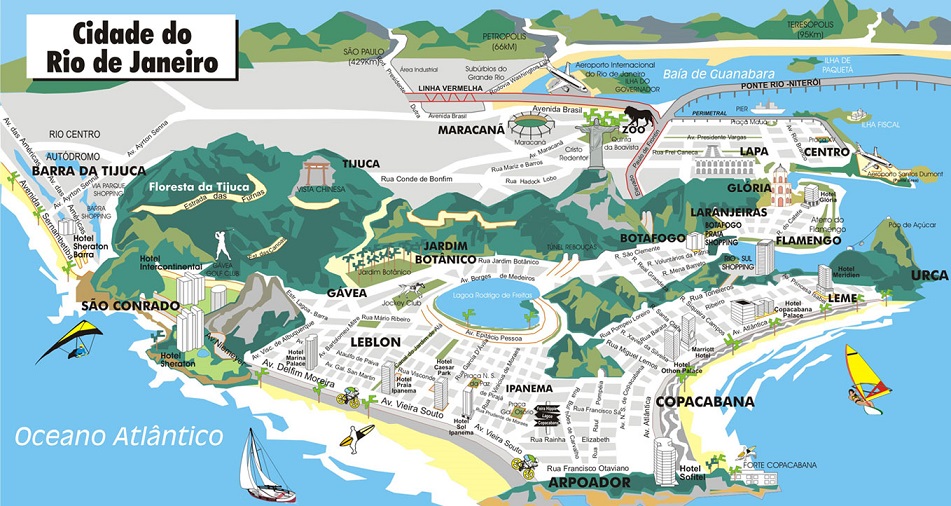
Rio de Janeiro is on a strip of Brazil's Atlantic coast, close to the Tropic of Capricorn, where the shoreline is oriented east–west. Facing largely south, the city was founded on an inlet of this stretch of the coast, Guanabara Bay (Baía de Guanabara), and its entrance is marked by a point of land called Sugar Loaf (Pão de Açúcar)—a "calling card" of the city.
The Center (Centro), the core of Rio, lies on the plains of the western shore of Guanabara Bay. The greater portion of the city, commonly referred to as the North Zone (Zona Norte), extends to the northwest on plains composed of marine and continental sediments and on hills and several rocky mountains. The South Zone (Zona Sul) of the city, reaching the beaches fringing the open sea, is cut off from the Center and from the North Zone by coastal mountains. These mountains and hills are offshoots of the Serra do Mar to the northwest, the ancient gneiss-granite mountain chain that forms the southern slopes of the Brazilian Highlands. The large West Zone (Zona Oeste), long cut off by the mountainous terrain, had been made accessible by new roads and tunnels by the end of the 20th century.
The population of the city of Rio de Janeiro, occupying an area of 1,182.3 square kilometres (456.5 sq mi), is about 6,000,000. The population of the greater metropolitan area is estimated at 11–13.5 million. It was Brazil's capital until 1960, when Brasília took its place. Residents of the city are known as cariocas. The official song of Rio is "Cidade Maravilhosa", by composer André Filho.
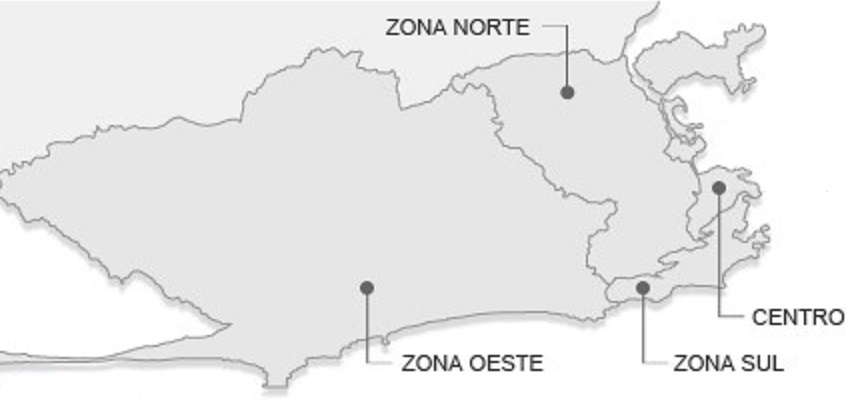
Centro
Centro is the historic core of the city, as well as its financial center. Sites of interest include the Paço Imperial, built during colonial times to serve as a residence for the Portuguese governors of Brazil; many historic churches, such as the Candelária Church, (the former cathedral), Sao Jose, Santa Lucia, Nossa Senhora do Carmo, Santa Rita, San Francisco de Paula, and the monasteries of Santo Antonio and Sao Bento. The Centro also houses the modern concrete Rio de Janeiro Cathedral. Around the Cinelândia square, there are several landmarks of the Belle Époque of Rio, such as the Municipal Theatre and the National Library building. Among its several museums, the Museu Nacional de Belas Artes (National Museum of Fine Arts) and the Museu Histórico Nacional (National Historical Museum) are the most important. Other important historical attractions in central Rio include its Passeio Público, an 18th-century public garden. Major streets include Avenida Rio Branco and Avenida Vargas, both constructed, in 1906 and 1942 respectively, by destroying large swaths of the colonial city. A number of colonial streets, such as Rua do Ouvidor and Uruguayana, have long been pedestrian spaces, and the popular Saara shopping district has been pedestrianized more recently.
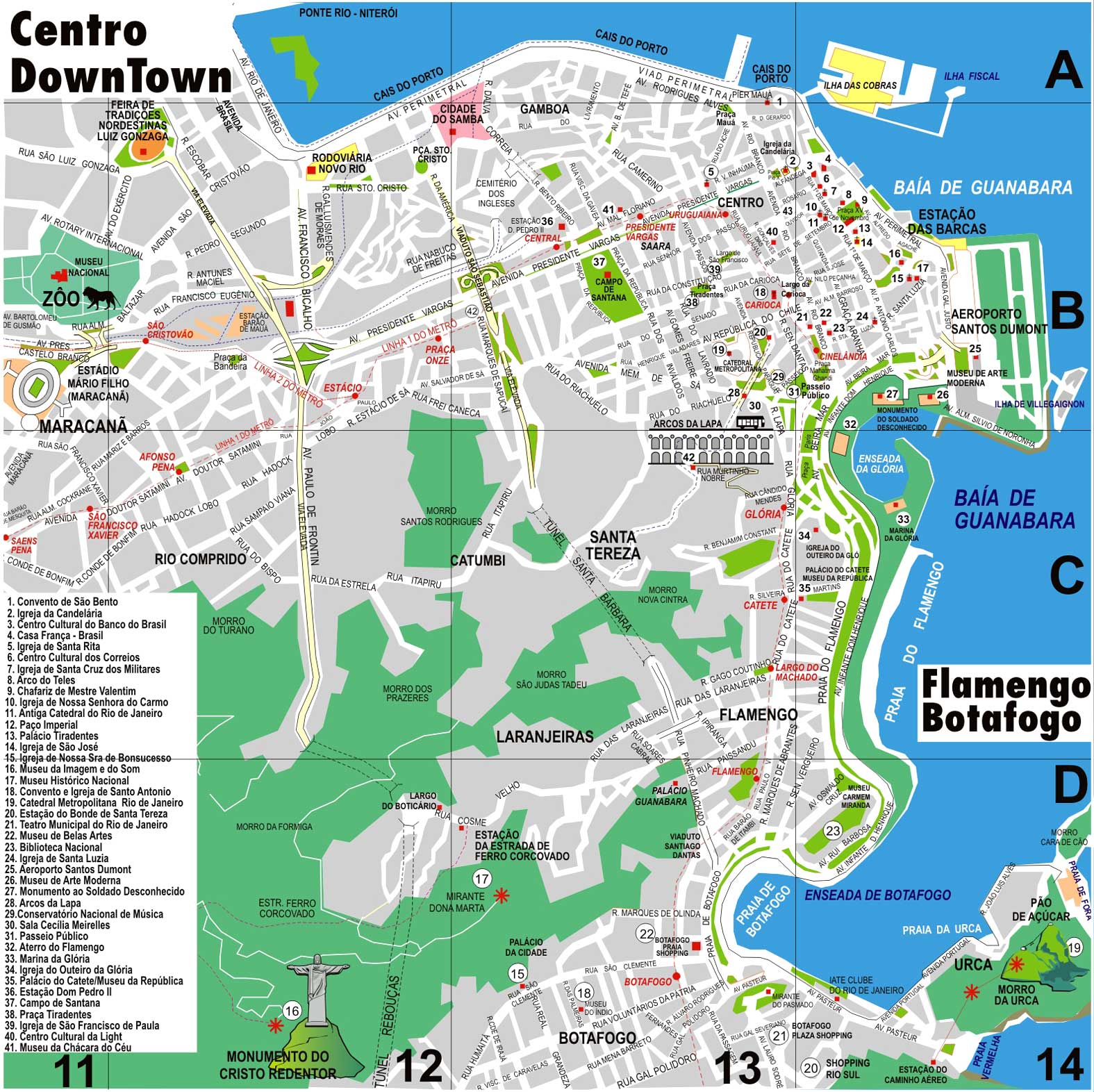
Places of Interest
- -- Avenida Rio Branco
- -- Avenida Vargas
- -- Candelária Church
- -- Cinelândia Square
- -- Municipal Theatre
- -- Museu Histórico Nacional -- National Historical Museum
- -- Museu Nacional de Belas Artes -- National Museum of Fine Arts
- -- National Library
- -- Paço Imperial
- -- Passeio Público -- An 18th-century public garden.
- -- Rio de Janeiro Cathedral
- -- Rua do Ouvidor
- -- Rue Uruguayana
- -- Saara -- A popular shopping district.
Zona Sul

The South Zone of Rio de Janeiro is composed of several districts, among which are São Conrado, Leblon, Ipanema, Arpoador, Copacabana, and Leme, which compose Rio's famous Atlantic beach coastline. Other districts in the South Zone are Glória, Catete, Flamengo, Botafogo, and Urca, which border Guanabara Bay and Santa Teresa, Cosme Velho, Laranjeiras, Humaitá, Lagoa, Jardim Botânico, and Gávea.
It is the wealthiest part of the city and the best known overseas; the neighborhood of Leblon in particular has the most expensive real estate in all of South America.
The neighbourhood of Copacabana beach hosts one of the world's most spectacular New Year's Eve parties ("Reveillon"), as more than two million revelers crowd onto the sands to watch the fireworks display. As of 2001, the fireworks have been launched from boats, to improve the safety of the event. To the north of Leme, and at the entrance to Guanabara Bay, is the district of Urca and the Sugarloaf Mountain ('Pão de Açúcar'), whose name describes the famous mountain rising out of the sea. The summit can be reached via a two-stage cable car trip from Praia Vermelha, with the intermediate stop on Morro da Urca. It offers views second only to Corcovado mountain.
Hang gliding is a popular activity on the Pedra Bonita (literally, "Beautiful Rock"). After a short flight, gliders land on the Praia do Pepino (Pepino, or "cucumber", Beach) in São Conrado.
Since 1961, the Tijuca National Park (Parque Nacional da Tijuca), the largest city-surrounded urban forest and the second largest urban forest in the world, has been a National Park. The largest urban forest in the world is the Floresta da Pedra Branca (White Rock Forest), which is also located in the West Zone of Rio de Janeiro. The Pontifical Catholic University of Rio (Pontifícia Universidade Católica do Rio de Janeiro or PUC-Rio), Brazil's top private university, is located at the edge of the forest, in the Gávea district. The 1984 film "Blame It on Rio" was filmed nearby, with the rental house used by the story's characters sitting at the edge of the forest on a mountain overlooking the famous beaches.
Zona Norte
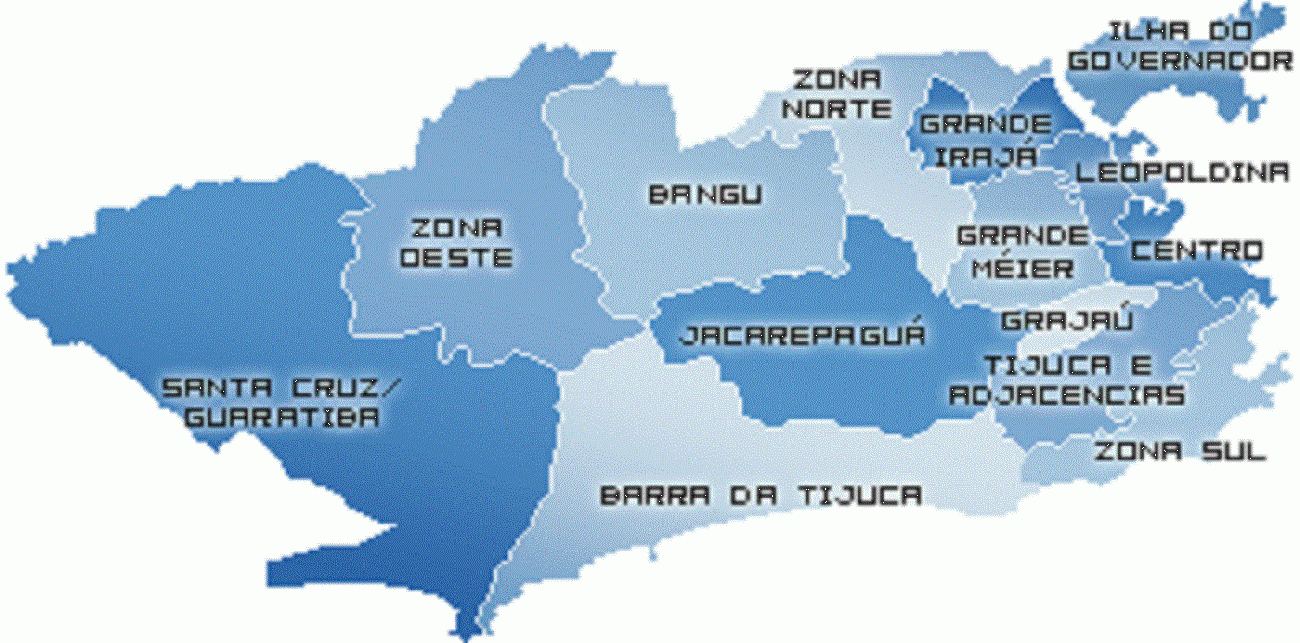
The North Zone begins at Grande Tijuca (the middle class residential and commercial bairro of Tijuca and its surrounding neighborhoods and favelas), just west of the city center, and sprawls for miles inland until Baixada Fluminense and the city's Northwest.
This region is home to the Maracanã stadium (located in Grande Tijuca), once the world's highest capacity football (soccer) venue, able to hold nearly 199,000 people, as it did the World Cup final of 1950. In modern times its capacity has been reduced to conform with modern safety regulations and the stadium has introduced seating for all fans. Currently undergoing reconstruction, it has now the capacity for 90,000 fans; it will eventually hold around 80,000 people. Maracanã was site for the Opening and Closing Ceremonies and football/soccer competition of the 2007 Pan American Games, and will host the final match of 2014 FIFA World Cup and the Opening and Closing Ceremonies and football matches of the 2016 Summer Olympics. Tijuca Forest in the city.
Besides Maracanã, the North Zone of Rio also holds other tourist and historical attractions, such as 'Manguinhos', the home of Instituto Oswaldo Cruz, a centenarian biomedical research institution with a main building fashioned like a Moorish palace, and the beautiful Quinta da Boa Vista, the park where the historic Imperial Palace is located. Nowadays, the palace hosts the National Museum, specializing in Natural History, Archaeology, and Ethnology.
The International Airport of Rio de Janeiro (Galeão – Antônio Carlos Jobim International Airport, named after the famous Brazilian musician Antônio Carlos Jobim), the main campus of the Federal University of Rio de Janeiro at the Fundão Island, and the State University of Rio de Janeiro, in Maracanã, are also located in the Northern part of Rio.
This region is also home to most of the samba schools of Rio de Janeiro such as Mangueira, Salgueiro, Império Serrano, Unidos da Tijuca, among others. Some of the main neighborhoods of Rio's North Zone are Tijuca, which shares the Tijuca Rainforest with the South and Southwest Zones; Água Santa, Vila Isabel, Méier, São Cristovão, Madureira, Penha, Manguinhos, Fundão, among others.
Many of the Rio de Janeiro's roughly 1000 shantytowns, or favelas, which makes it resembling many other cities in underdeveloped and developing countries, are located in Zona Norte.
Zona Oeste
The West Zone of the city of Rio de Janeiro makes up about 50% of the city area. It has two areas with very different characteristics: the southern part of West Zone is a rich area, considered an extension of the South Zone. The northern part of the West Zone is a suburb, considered an extension of the North Zone.
Southern Region -- Barra da Tijuca
This area is the most recently modernized region of Rio de Janeiro. It includes Barra da Tijuca, Recreio dos Bandeirantes, Vargem Grande, Vargem Pequena, Grumari, Jacarepaguá as well minor neighbourhoods close to those cited here. There is a clear social contrast between this area and the Campo Grande/Santa Cruz area. Nevertheless, this area has its own favelas, such as Cidade de Deus, outlying the middle and upper class areas.
Westwards from the older zones of Rio, Barra da Tijuca is a flat complex of barrier islands of formerly undeveloped coastal land, which constantly experience new constructions and developments. It remains an area of accelerated growth, attracting some of the richer sectors of the population as well as luxury companies. High rise flats and sprawling shopping centers give the area a far more American feel than the crowded city centre.
The urban planning of the area, made in the late 1960s, resembles that of United States suburbs, through mixing zones of single-family houses with residential skyscrapers. The beaches of Barra da Tijuca are also popular with the city's residents. Barra da Tijuca is the home of Pan-American Village built for the 2007 Pan American Games.
The highest hill in Rio is Pedra Branca peak (Pico da Pedra Branca), in Barra da Tijuca region, and one of the most famous hills in the city is the 842 metres (2,762 ft) high Pedra da Gávea (Crow's nest Rock) near South Zone. On the top of its summit is a huge rock formation (some, such as Erich von Däniken in his 1973 book, "In Search of Ancient Gods", claim it to be a sculpture) resembling a sphinx-like, bearded head that is visible for many kilometers around.
This is the area of the City that will hold most of the sports venues and competitions during the 2016 Summer Olympic Games. It will be home to the Olympic Village, Olympic Beach, and Olympic Park as well.
Northern Region -- Campo Grande / Santa Cruz
This area is separated from the Barra da Tijuca by the Maciço da Pedra Branca and the Serra da Grota Funda. It has exhibited economic growth, mainly in the Campo Grande neighborhood. New industrial enterprises are being built in contemporarily lower and lower middle class residential Santa Cruz, one of the largest and most populous Rio de Janeiro's neighborhoods, most notably Companhia Siderúrgica do Atlântico (CSA), a new steel mill with its own private docks on Sepetiba Bay, planned to be South America's largest steel works. A tunnel called Túnel da Grota Funda, projected to open to traffic until May 2012, will diminish the time of access to the region from other areas of Rio de Janeiro and create a public transit facility between Barra da Tijuca and Santa Cruz.
Neighborhoods of the City
Saúde
Gamboa
Santo Christo
Caju
Centro
Catumbi
Rio Camprido
Cidade Nova
Estácio
São Cristóvão
Mangueira
Benefica
Paquetá
?
?
?
?
?
?
?
?
?
Leme - South Zone
Description: Leme in Portuguese means helm. It is a quiet neighborhood located at the northern end of Copacabana. The neighborhood derives its name from a nearby rock formation which is shaped like the helm of a ship. You need to visit Leme if you want a beautiful view of the sunset.
Location: Leme is located in the neighborhood of Zona Sul (South Zone) next to Copacabana, Urca and Botafogo. The area is just 5 to 10 minutes away from South Copacabana or Ipanema.
Leme Beach: Leme Beach is on the northern side of the Copacabana beach, where Posto 1 is located. The beach is much quieter than Copacabana since this is mainly a residential area.
Morro de Leme: The English translation is "helm's hill". It is a beautiful hill located at the end of the Copacabana beach (also aka Leme). The Morro has undergone a massive reforestation process and now boasts of 11,000 different types of plants and 90 animal species. You can walk through the 4 square hectares forest along a cobblestone road. The Morro is also home to Sagui Monkeys whom you can see frolicking around the area. Praia Vermelha, the largest beach in Urca starts right around the hill. Forte do Leme is located on the foot of the hill. Built between 1913 and 1919, it is now used as a cultural center by the army. You can view the arms exhibit which includes 20th century German Krupp howitzers (280 mm swivel cannons).
As Estações da Cruz: For about 20 minutes and R$ 4 the entrance you will be able to experience the depictions of the 15 Stations of the Cross in bronze and copper statues a remarkable sight irrespective of your religious inclinations. The final hours of Jesus is beautifully portrayed on these exquisite sculptures. On the first Friday of every month at 3 pm, a priest leads the faithful in prayer through the 15 Stations of the Cross.
Caminho dos Pescadores: The fisherman’s path or Caminho dos Pescadores partially circles the Morro do Leme. This spot is perfect for taking pictures of the horse shoe shaped Copacabana beach.
Festivais: Every year in the days leading up to New Year's on December 31 the traditional processions honoring Yemaja begin here. The famous party of Réveillon or New Year's Eve in Copacabana extends completely into Leme as well.
Hotels: Leme has its fair share of good hotels and restaurants and a character of its own. The beach is more popular with families as it is quieter and less crowded. The beach kiosks are especially popular with crowd. Over the years 50-60 high buildings were constructed as the hotel Le Méridien. Le Méridien closed in 2007 and was sold in 2009 to Windsor Hotels for around R$170 million. After a refurbishment, it was reopened in January 2011 as the Windsor Atlantica Hotel.
Restaurants: Marius is one of the most popular restaurants at the end of Av. Atlantica, Leme. Apart from serving a variety of prime cuts of beef, the restaurant also offers excellent seafood such as smoked salmon, oysters and shrimp. Don’t forget to experiment the salad bar which is a popular option with frequent diners. Being a churrascaria, you can enjoy your meal while the staff continue to serve you till you tell them to stop. Do make it a point to visit Marius if you want a perfect romantic evening with your better half.
Websites: http://www.rio.com/practical-rio/leme
?
?
?
?
?
?
?
?
?
?
?
?
?
?
?
?
?
?
?
?
?
?
?
?
?
?
?
?
?
?
?
?
?
?
?
?
?
?
?
?
?
?
?
?
?
?
?
?
?
?
?
?
?
?
?
?
?
?
?
?
?
?
?
?
?
?
?
?
?
?
?
?
?
?
?
?
?
?
?
?
?
?
?
?
?
?
?
?
?
?
?
Jacarepaguá - West Zone - Rio de Janeiro
Description
Jacarepaguá is located in the West Zone of Rio in the Baixada de Jacarepaguá, between Maciço da Tijuca and the Serra da Pedra Branca. The upper middle class Barra da Tijuca separates the suburb from the sea. Jacarepaguá possesses a land area of 29.27 square miles (75.8 km2), and is the 4th largest neighborhood situated in the West Zone. In 2000, it had a population of 100,822, making it the 9th most populous neighborhood in the city. The suburb is known for large open areas where events and shows, such as the last Rock in Rio, take place. It is also, one of the greenest areas of Rio, with plenty of nature in some of the sub-areas, especially in Vargem Grande and Vargem Pequena.
Etymology
The name comes from the indigenous name of the location, "shallow pond of alligators", yakaré (alligator) + upá (pond) + guá (shallow), by the time of the Portuguese invasion.
History
Arenas
Attractions
Business
Jacarepaguá is also the biggest center of TV recording studios in Latin America, where RecNov (Record's studio), Projac Globo's studio—the biggest one in Latin America—are located. Band's studio, Polo de Cinema e Video studio are also there, and the Mexican broadcaster Televisa will soon open a branch there.
Educational Institutions
- -- <<Garriga de Menezes>>
- -- <<Pentágono>>
- -- <<Primus>>
- -- <<>>
- -- <<>>
Favelas
Jacarepaguá is a middle-class neighborhood, but one of Rio's largest slums, Cidade de Deus, and others like Favela Covanca, Barao, Inacio do Amaral,etc. are located in the region.
Holy Ground
Night Clubs
- -- <<Bandeirantes>>
- -- <<Olímpico>>
Samba Schools
- -- <<Unidos de Jacarepaguá>>
Shopping
- -- <<Centre Shopping>>
- -- <<Rio Shopping>>
- -- <<Quality Shopping>>
Vampires
- -- House of the Western Brotherhood -- Gathering place for Rio's Assamites in an abandoned Mosque.
Websites
http://en.wikipedia.org/wiki/Jacarepagu%C3%A1
?
?
?
?
?
?
?
?
?
?
?
?
?
?
?
?
?
?
?
?
?
?
?
?
?
?
?
?
?
?
?
?
?
?
Realengo - West Zone - Rio de Janeiro
Description
Realengo is a neighborhood in the West Zone of Rio de Janeiro, Brazil. The lower and middle-class neighborhood is between the Mendanha and Pedra Branca mountains. It is located between the mountains of Pedra Branca (White Rock) and Mendanha in the northern part of what is called the West Zone of the city. Realengo usually has the highest temperatures in the city, even though the winter nights are often cold because of the proximity to the mountains. The district was created on November 20th in the year of our lord 1815; every year on this day the city's birthday is celebrated with the Week of Realengo celebration. According to a survey by the Instituto Pereira Passos (Pereira Passos Institute) and the Brazilian Institute of Geography and Statistics, in 2000 Realengo reached the 89th position in the rank of HDI.
Etymology
According to popular tradition, its name would have been short for the Real Engenho (Royal Mill) which was Real Eng°, posted on the board on top of the tramway and, over time, became popularly Realengo. However, another source comes from the phrase "Terras Realengas" (Land Realengas) because they were far from the court, as they were called the land of the region. Pedro I of Brazil used to go to the farm of Santa Cruz (Saint Cross) by the Estrada Real de Santa Cruz (Royal Road to Santa Cruz), passing by the Real Engenho, where he often stayed.
History
The so-called Terras originated, according to some historians, with the Carta Régia (Royal Charter) of June 27, 1814, by which John VI of Portugal, also a prince, gave land grants in the Senate of Rio de Janeiro land situated in Campo Grande (Big Field). These were called realengos, or royal lands, arising because of territorial conquest by the discovery of the country; they were not ordinary real estate. The land grant in what is now the Realengo neighborhood, center and periphery, was intended to serve only for grazing cattle, supplying meat to butchers in the city. These lands were banned from any sale by the disposition requiring that the Senate survey and prepare them to serve the purpose for which they were donated by that charter.
The village of Realengo was limited by the Senate of Rio de Janeiro, by the provision of July 18, 1814, taking over the Court of the lands tested on the Estrada da Santa Cruz (Road of Saint Cross) and depths of more than twenty fathoms. Despite the express prohibition of lease, sale or other disposition, the Senate, after a certain time, taking advantage of the charter of June 27 has all land granted for such reasons that in addition to the ordinance November 20, 1815 the Prince Regent known as royal notice, on December 20, 1815 that allowed only the tenure of the party which was tested on the Estrada de Santa Cruz (and depths of 20 fathoms the maximum, not at all Realengo).
The neighborhood had its first settlers, slaves and immigrants from the Portuguese island of the Azores, by order of the Prince Regent Dom João, later Dom João VI. When they devoted themselves to agriculture for grazing leading products such as sugar, molasses, alcohol and rum, the port of Guaratiba. Research shows that there was only one mill in Realengo as everything was taken to undergo transformation into other properties.
Hospitals
State Hospital Albert Schweitzer serves a population of around 700 thousand inhabitants. The Realcordis Hospital is affiliated to Rede D'Or. São Miguel Hospital replaced the former Serv Baby Maternity and Hospital. There is also a unit of UPA 24H (Unidade de Pronto Atendimento 24 Horas - Emergency Service Unit).
Parks
Realengo still has remnants of rainforest that are home to endangered animals such as the Golden lion tamarin, armadillo, macaw, crowned kinglet, monkey frog, and plants like orchids, bromelias and other flora and fauna. The subsede Parque da Pedra Branca (White Rock Park), the door to the Maciço da Pedra Branca (Massif of White Rock) is found in sub-district Barata. Inaugurated on October 17, 2009 by Governor Sérgio Cabral Filho, the government spent R$ 786,000.00 (seven hundred eighty-six reais) in equipment such as water tanks and springs, it also runs a post of Firemen to maintain order in the reserve.
Schools
Municipal School Tasso da Silveira is located in Realengo. As of 2011 the public school has about 800 students. On April 7, 2011, 23-year-old gunman Wellington Menezes Oliveira killed at least 12 students in his former school. The crime occurred in the Tasso da Silveira elementary public school, located in this neighborhood.
Websites
http://en.wikipedia.org/wiki/Realengo,_Rio_de_Janeiro
A História do Rio
16th Century Timeline
- -- 1565 CE: São Sebastião do Rio de Janeiro founded by Portuguese. Fortaleza de São João built.
16th Century Rio
Long before Europeans arrived in what is now Brazil, the area was populated by many different groups of native people, including the Arawak and Carib. The Spanish navigator Vicente Yáñez Pinzón (c.1460–c.1524) is credited with being the first known European to sight Brazil when he landed near present-day Recife on January 26, 1500.
The Spaniards didn't make a claim to the territory as it was assigned to Portugal under the Treaty of Tordesillas (1494). Under papal authority, the agreement divided the New World between Spain and Portugal. In theory, the other European countries were not allowed to colonize the New World.
In April 1500, apparently blown off course, Portuguese navigator Pedro Alvarez Cabral (c.1467–c.1520) reached Brazil and formally claimed the area for Portugal. Explorers sighted what is now Rio in 1502, but the Portuguese didn't build any permanent settlements. By 1530, with other European nations eager to establish a foothold in the New World, the Portuguese monarchy strengthened its hold on Brazil, dividing the territory into 15 captaincies (administrative districts), each under the jurisdiction of powerful members of the court.
If it hadn't been for French inter-lopers, Rio may have never developed as a city. Salvador and Sao Paulo were founded several years before the Portuguese took any interest in the Rio area. While the Portuguese frantically built forts to keep other countries at bay, the French began to test Brazil's defenses. French traders were after the valuable brazil wood, for which the country is now named. By the mid-1550s, they founded a settlement on one of the islands of Guanabara Bay and called it La France Antarctique (Antarctic France).
Portugal's monarchy sent Estácio de Sá, a nephew of Governor Mem de Sá of Brazil, to get rid of the French in 1565. For the next two years, the Portuguese and French waged bloody battles in what is now Rio de Janeiro. De Sá was killed during one of the skirmishes, but the French were finally ousted from the area in 1567. By 1568, Rio had begun to take formal shape with the construction of a citadel. As in many other early colonies, Rio survived by farming, especially sugarcane.
17th Century Timeline
- -- 1603: St James of Mercy Fort built.
- -- 1663: Padre Eterno galleon launched.
- -- 1693: Calaboose Prison built.
17th Century Rio
By 1660, Rio had attained some degree of importance and was named the seat of government for the southern captaincies. About 8,000 people—mostly Indian and black slaves who were forced to work in the plantations—lived in the city.
18th Century Timeline
- -- 1743: Paço Imperial built.
- -- 1750: Carioca Aqueduct built.
- -- 1763: Portuguese America administrative center moved to Rio de Janeiro from Salvador.
- -- 1770: Old Cathedral of Rio de Janeiro consecrated.
- -- 1783: Passeio Público constructed.
- -- 1792: Real Academia de Artilharia, Fortificação e Desenho founded.
18th Century Rio
The discovery of gold, diamonds, silver, and other precious minerals in what is now the state of Minas Gerais (general mines), northwest of Rio, boosted the city's fortunes during the 1700s. The Portuguese moved their capital city from Salvador to Rio in 1763, a symbol of its growing importance. Rio grew rapidly, with thousands of European immigrants attracted by diamonds and gold. By the late 1700s, Rio expanded beyond its protective walls.
Rio's growth faltered a bit by the 1790s. Dependent on an export economy, the city was facing formidable competition for its sugar from other colonies in the Americas, and the mines were showing signs of declining production. In just a few years, the value of exports shipped through Rio's port was cut in half. Yet, Rio would not stay down for too long.
Rio during the Napoleonic Wars
During the Napoleonic wars (1799–1815), Portugal remained faithful to England, earning France's scorn. Napoleon Bonaparte's troops invaded Portugal. Maria I (r. 1777–1816) and her son, the future João VI, escaped to Brazil and established a government in exile in Rio de Janeiro in 1808. Outside the city, coffee production had replaced sugar as a main crop, and Rio was again on its way to economic recovery. With the monarchs in town, Rio reinvented itself, growing in population and in beauty. Older buildings were restored; hundreds of new mansions and smaller living quarters were built; streets were paved and lighted. More land was reclaimed. The monarchs established the Royal Press, the Royal Library, and the Botanical Gardens, among many others. In 1808, the city's first newspaper was published.
19th Century Timeline
- -- 1803: Paço de São Cristóvão building erected.
- -- 1808: Rio de Janeiro becomes the capital of Kingdom of Portugal.
- -- 1811: Candelária Church inaugurated.
- -- 1815: Rio becomes capital of United Kingdom of Portugal, Brazil and the Algarves
- -- 1818: Royal Museum established.
- -- 1822: Rio de Janeiro becomes capital of an independent Brazil.
- -- 1822: Rio de Janeiro Botanical Garden opens.
- -- 1852: Theatro Provisório built.
- -- 1854: Catete Palace built.
- -- 1858: Central do Brasil inaugurated.
- -- 1871: Theatro D. Pedro II inaugurated.
- -- 1877: Santa Teresa Tram opens.
- -- 1884: Corcovado Rack Railway opens.
- -- 1891: Jornal do Brasil newspaper begins publication.
19th Century Rio
With the death of Maria I, who had been insane for the last 24 years of her life, her son João VI (r. 1816–1826) became king. João was initially popular in Rio and the rest of Brazil. Some Cariocas, perhaps sensing his importance to the city, did not want him to return to Portugal, where liberals demanded an end to the monarchy. Under growing political pressure, João accepted greatly diminished powers and returned to rule Portugal in 1821. His son, Pedro I (1798–1834; r. 1822–31), stayed in Brazil. Portugal attempted to reassert its authority over Brazil. But with British aid, Pedro declared Brazil's independence and became emperor in 1822. By now, Rio had grown to more than 100,000 people. Pedro ruled until 1831 when he abdicated in favor of Pedro II (1825–1891), the five-year-old heir-apparent. By 1840, Pedro II was old enough to rule and was named emperor. Under his leadership, Brazil continued to thrive with coffee, sugar, cotton, and rubber exports. Pedro II's administration oversaw the continued modernization of Rio. Rail, gas lighting, telephone, and steamboat service to other cities were all in place by the 1870s. However, Pedro would not last. He was against slavery and abolished it in 1888. The move cost him. He was overthrown in 1889, and a republic replaced the monarchy. Rio, which already had more than 500,000 residents, was named the capital of the republic.
20th Century Timeline
- -- 1902: Universidade Cândido Mendes founded.
- -- 1904: Vaccine Revolt.
- -- 1904: Avenida Rio Branco constructed.
- -- 1906: Palácio Monroe erected.
- -- 1908: City flag design adopted.
- -- 1909: Teatro Municipal (Rio de Janeiro) inaugurated.
- -- 1912: Afonsos Air Force Base built.
- -- 1912: Civil Police Museum founded.
- -- 1914: Fort Copacabana built.
- -- 1919: South American Championship held.
- -- 1920: Federal University of Rio de Janeiro founded.
- -- 1922: National Historical Museum (Brazil) created.
- -- 1922: Population: 1,130,000.
- -- 1922: Hotel Glória built.
- -- 1922: Morro do Castelo (Castle Hill) demolished -- now Castelo neighborhood.[2]
- -- 1923: Copacabana Palace Hotel inaugurated.
- -- 1926: Hipódromo da Gávea built.
- -- 1927: Edificio do Jornal A Noite built.
- -- 1931: Pedro Ernesto Baptista becomes mayor.
- -- 1931: Cristo Redentor statue built.
- -- 1936: Bartolomeu de Gusmão Airport inaugurated.
- -- 1936: Manguinhos Airport opens.
- -- 1936: Santos Dumont Airport inaugurated.
- -- 1937: Universidade Santa Úrsula founded.
- -- 1938: Museu Nacional de Belas Artes inaugurated.
- -- 1940: Pontifical Catholic University of Rio de Janeiro founded.
- -- 1943: Gustavo Capanema Palace built.
- -- 1943: Santa Cruz Air Force Base established.
- -- 1945: Zoological Garden inaugurated.
- -- 1947: South American Basketball Championship held.
- -- 1950: Rio de Janeiro State University established.
- -- 1950: Maracanã (stadium) opens.
- -- 1951: Nova Iguaçu level crossing disaster.
- -- 1952: Instituto Nacional de Matemática Pura e Aplicada established.
- -- 1952: Escola Brasileira de Administração Pública e de Empresas founded.
- -- 1953: Museu do Índio created.[3]
- -- 1954: Ginásio do Maracanãzinho built.
- -- 1958: Train crash.
- -- 1960: Brazilian capital moved from Rio to Brasília.
- -- 1960: Rio becomes Guanabara State, smallest state of Brazil.
- -- 1961: Tijuca Forest becomes a national park.
- -- 1961: Edificio Avenida Central built.
- -- 1965: Flamengo Park created.
- -- 1965: Banda de Ipanema begins.
- -- 1971: Jacarepaguá Airport opens.
- -- 1971: Faculdades Integradas Hélio Alonso founded.
- -- 1972: Petrobras Headquarters built.
- -- 1972: Hotel Horsa Nacional built.
- -- 1975: Rio the city, becomes part of Rio de Janeiro (state).
- -- 1975: Marcos Tamoio becomes mayor.
- -- 1975: Escola de Artes Visuais do Parque Lage created.
- -- 1976: Le Méridien Copacabana opens.
- -- 1977: Riocentro built.
- -- 1977: Rio Othon Palace hotel opens.
- -- 1978: Autódromo Internacional Nelson Piquet built.
- -- 1979: Rio de Janeiro Metro founded.
- -- 1979: Israel Klabin becomes mayor.
- -- 1979: Universidade Federal do Estado do Rio de Janeiro established.
- -- 1979: Rio de Janeiro Cathedral built.
- -- 1980: Júlio Coutinho becomes mayor.
- -- 1980: 105 Lélio Gama St. built.
- -- 1981: Barra Shopping opens.
- -- 1982: Rio Sul Center built.
- -- 1983: Jamil Haddad becomes mayor, succeeded by Marcello Alencar.
- -- 1984: Sambadrome Marquês de Sapucaí built.
- -- 1984: CasaShopping opens.
- -- 1986: Roberto Saturnino Braga becomes mayor.
- -- 1988: Jó Antônio Resende becomes mayor.
- -- 1989: Marcello Alencar becomes mayor.
- -- 1989: Centro Cultural Banco do Brasil (Rio branch) opens.
- -- 1990: Eva Klabin Foundation museum established.
- -- 1990: Escadaria Selarón construction begins.
- -- 1992: United Nations Conference on Environment and Development (Earth Summit) held.
- -- 1993: César Maia becomes mayor.
- -- 1993: Candelária massacre.
- -- 1994: Metropolitan hall opens.
- -- 1995: Centro Empresarial Internacional Rio built.
- -- 1997: Luiz Paulo Conde becomes mayor.
- -- 1997: Miécimo da Silva Sports Complex opens.
- -- 1998: Terra Encantada opens.
- -- 1998: Project Morrinho begins.
- -- 1998: Palace II building collapses.
20th Century Rio and the Republic
During the early years of the republic, Rio de Janeiro changed dramatically. The federal government set out to modernize the city, first bringing tropical diseases like yellow fever under control. By 1920, the city was becoming an important industrial center with a population that exceeded one million people. The city grew by reclaiming land from Guanabara Bay and leveling hills. By 1940, Rio had grown to nearly two million people with no signs of slowing down. By then, the government could no longer control growth. Skyscrapers and large apartment buildings replaced homes and small buildings. Poorer residents were pushed further into the fringes of the city. Rio was now under siege from national interests. Many of Brazil's politicians wanted to develop the vast interior of the country. In 1957, Brazilians began to build the city of Brazilia, which replaced Rio as the national capital in 1960.
The Golden Age of Rio: 1920 to 1950
The early 1920s to the late 1950s were Rio’s golden age. With the inauguration of the grand hotels (the Glória in 1922 and the Copacabana Palace in 1924), Rio became a romantic, exotic destination for Hollywood celebrities and international high society who came to play and gamble at the casinos and dance or perform in the nightclubs.
Rio continued to change. Three large landfill projects were undertaken to ease the strain on a city restricted by its beautiful surroundings. The first was to become Aeroporto Santos Dumont, near Centro. The second resulted in Flamengo Park, and the third expanded the strand at Copacabana.
1960s Rio
Rio remained the political capital of Brazil until 1960, when the government moved to Brasília. During the 1960s, modern skyscrapers rose in the city, and some of Rio’s most beautiful buildings were lost, but the beach-side residential areas of Copacabana and Ipanema were among the most desirable addresses in the world. During the same period, the favelas (shantytowns) of Rio grew to critical mass with immigrants from poverty-stricken areas of the Northeast and the interior, swelling the number of Rio’s urban poor. The Cidade Maravilhosa began to lose its gloss as crime and violence increased.
The Military Dictatorship of Rio: 1964 to 1985
The final decade of the military dictatorship that ruled Brazil from 1964 to 1985 was not kind to Rio. There were numerous protests during that period (notably in 1968 when some 100, 000 marched upon the Palácio Tiradentes). Even Rio’s politicians opposed the military regime, which responded by withholding vital federal funding. The administration was forced to tighten its belt, and infrastructure deteriorated as the city’s coffers dried up.
A Return to Fortune: Rio in the 1990s
A turning point for Rio came when it was chosen as host city for Eco 92, the UN Conference on Environment and Development. In the build-up to the conference, the federal government poured in almost US$1 billion to improve Rio’s infrastructure. Approximately US$18 million was spent on satellite communications alone, and Riocentro, a huge convention center, was built.
21st Century Timeline
- -- 2000: 2000 Ibero-American Championships in Athletics held.
- -- 2001: César Maia becomes mayor.
- -- 2002: Instituto Superior de Tecnologia em Ciências da Computação do Rio de Janeiro established.
- -- 2004: Torre Almirante built.
- -- 2006: Koni Store founded.
- -- 2007: Cantagalo Station opens.
- -- 2007: Estádio Olímpico João Havelange built.
- -- 2007: HSBC Arena (Rio de Janeiro) opens.
- -- 2007: 2007 Pan American Games held.
- -- 2007: Rio de Janeiro train collision.
- -- 2008: Rio International Open Jiu-Jitsu Championship begins.
- -- 2009: Eduardo Paes becomes mayor.
- -- 2009: Rio wins the 2016 Olympics and Paralympics bid.
- -- 2010: World Urban Forum held.
- -- 2010: Population: 6,320,446.
- -- 2011: Cidade da Música built.
- -- 2011: School shooting.
- -- 2012: United Nations Conference on Sustainable Development held.
- -- 2012: Building collapses.
- -- 2012: TransOeste inaugurated.
- -- 2013:
- -- 2014:
- -- 2015:
- -- 2016:
- -- 2017:
- -- 2018:
- -- 2019:
- -- 2020:
- -- 2021:
- -- 2022:
- -- 2023:
- -- 2024:
- -- 2025:
- -- 2026:
- -- 2027:
- -- 2028:
- -- 2029:
- -- 2030:
- -- 2031:
- -- 2032:
- -- 2033:
- -- 2034:
- -- 2035:
- -- 2036:
- -- 2037:
- -- 2038:
- -- 2039:
- -- 2040:
Rio in the 21st Century
Today Rio’s coffers are full, and the city buzzes with an unstoppable creative energy, as long-awaited projects are finally being financed. The biggest is the Favela-Bairro project, which strives to integrate favelas into the rest of the city by providing basic sanitation and by planning leisure areas, health clinics, schools, preschools and community centers (Rio has pledged a total of US$1 billion over the life of the project). At the same time, some of Rio’s aging colonial gems are slowly being revitalized as new businesses arrive.
Rio’s most recent makeover took place in preparation for the 2007 Pan Am games, bringing thousands of visitors to the city.
Ongoing efforts of the Favela-Bairro project continue to be a major focus of development. This project, begun in 1994, has brought infrastructure and city services to numerous favelas.
A população da Cidade
- -- Municipality: 11,093,472 = Census of 2031
- -- Urban Area: 16,721,890 = Census of 2031
- -- Metro Area: 17,876,286 = Census of 2031
As massas mortais da Cidade (The Masses of Rio)
Dimas Franco -- Escaped Mental Patient
Appearance:
Behavior:
History:
Recent Events:
Statistics:
- -- Amílcar Barros -- Senior Master of the Guild of Pickpockets of the Marvelous City
- -- Konstantin Dragov -- Specter of a former gypsy (Roma) ghoul of the Ravnos Angelica Pinho. (deceased - September of 2031)
- -- Domingos Medeiros -- Chief fence in the city.
- -- Natália Medeiros -- Former wife of Domingos Medeiros and his chief competition.
- -- Diniz Machado -- Senior journeyman pickpocket and rival of Hugo Satrix.
- -- Father Modesto Gaspar -- Catholic Priest of the Aguas Amarelas Favella.
- -- Leandro Almeida -- Local beat cop in Brenda & Jason's region.
- -- Félix Nicolau Araújo -- Rio attorney
- -- Dr.Antónia Cruz -- Police psychologist (lesbian)
- -- Rebeca Vargas -- Cassandra's police partner
- -- Marcelino Duarte -- Embalmer at the Campos Verdes Mortuary
- -- Helder -- A Nosferatu ghoul.
- -- Diogo Mata -- Small time car thief
- -- Jean-Baptiste Paquet -- Eldest brother of a French tourist family.
- -- Élodie Couture-Paquet -- The wife of Jean-Baptiste and mother of Raphael.
- -- Raphael Paquet -- Son of Jean-Baptiste and Élodie.
- -- Bonifacio Pinheiro -- A local parish priest.
- -- Rogério -- Local Teen Crime-lord
- -- Tereza Branca Romão -- Reporter for one of the local hot-sheet rags.
- -- Jacinta Silva -- Campos Verdes Mortuary Owner
- -- Octávio Souza - Apostador Profissional
Arenas
Atrações (attractions)
- -- Corcovado {Hunchback mountain}
- -- Monumento do Cristo Redentor {Christ the Redeemer}
- -- Pão de Açúcar {Sugarloaf Mountain}
- -- Rua Farme de Amoedo (located in Ipanema): The street and nearby beach are remarkable for their popularity in the LGBT community, and as such it is a famous tourist spot.
Castelos na Cidade (castles in the city)
Cemitérios (cemeteries)
- -- Caju Cemetery
- -- Cemiterio Comunal Israelita (Jewish Cemetery)
- -- São João Batista Cemetery -- Location: Botafogo
Fé e Terra Santa (faith and holy ground)
- -- <<Catholic>>
- -- <<Protestant>>
- -- <<Spiritist>>
- -- <<Umbanda>>
- -- <<Candomblé>>
- -- <<Jewish>>
- -- Catedral do Sao Sabastiao do Rio de Janeiro
- -- Igreja de Nossa Senhora do Monte do Carmo da antiga Sé (Church of Our Lady of Mount Carmel of the Ancient See)
- -- Monastery of Saint Benedict of Rio de Janeiro (Sao Bento Monastery)
Governo da Cidade (city government)
Organizações Criminosas (criminal organizations)
- -- Cobras Pretas -- A rising local gang that has rather recently gotten into the business of snuff-porn.
- -- Escorpiões -- A local street gang with recent access to military grade small arms.
- -- Guild of Pickpockets of the Marvelous City -- A recently formed, but tightly knit cartel of picket-pockets in Rio.
- -- Yakuza -- Japanese organized crime in Rio.
Current Events
Galleries
Hospitals
Hotels & Hostels
Hypermarkets
Landmarks
Maps
Market Places
Multinational Corporations
Monuments
Museums
[[]]
Newspapers
- -- The Rio Times -- "News in English for Rio de Janeiro and Brazil"
Parks
- -- Jardim Botânico {botanic garden}
Private Residences
Restaurants
Ruins
Schools
Shopping
Theatres
Transportation
Vida Noturna (nightlife)
Discussion: The nightlife and club scene in Rio de Janeiro are spread out, more or less, into three specific districts: the lower Zona Sul (south zone), the upper Zona Sul and Centro (downtown). The lower Zona Sul is broken down into four neighborhoods: Copacabana, Gavea, Ipanema, and Leblon. The upper Zona Sul is broken down into the neighborhoods of Botafogo, Laranjeiras, Flamengo. Of course, there is also Centro which consists of the neighborhoods of Centro and Lapa.
The lower Zona Sul is the more affluent of the three disticts and attracts the wealthy locals and upper class tourists. Each nightclub has a cover and that admission fee can vary from 30 Reals (Brazilian monetary unit) up to 120 Reals. An interesting feature of Rio nightlife is that often, the cover fee acts as a sort of credit card, allowing the club-crawler to drink up to his cover charge without spending anything else. Currently, the most recommended clubs are Nossa Semhora in Copecabana, Conversa Fiada, Books and Baronetti in Ipeanema, Melt in Leblon and Zero-Zero in Gavea.
The upper Zona Sul is less affluent than the lower southern zone, but there are plenty of good opportunities if one has the patience to search for them. The primary clubs are: Casa Rosa in Laranjairas, and Casa do Matriz in Botafogo. The cover charge can range from 10 to 30 Reals and these places have a distinct house-party atmosphere and are quite informal.
- -- Conversa Fiada (Copecabana)
- -- Nossa Semhora (Copecabana)
- -- Baronetti (Ipeanema)
- -- Books (Ipeanema)
- -- Melt (Leblon)
- -- Zero-Zero (Gavea)
- -- Casa Rosa (Laranjairas)
- -- Casa do Matriz (Botafogo)
- -- Casa Merda (a dangerous place located in a nearby Favela)
http://www.mavericktraveler.com/rio-de-janeiro-nightlife-guide/
http://www.bing.com/search?q=rio+de+janeiro+clubs+guide&pc=MOZI&form=MOZSBR
Os vampiros da Cidade Maravilhosa
- As Leis da Cidade - The Laws of the City
- The Laws of Carnival
- Rio de Janeiro is a Free City - Free from the War of Ages.
- Within the City - There are no sects and no resident may claim allegiance unto them.
- The Penalty - Ignorant violation means banishment, knowing contravention is the final death.
Os Salões da Sociedade Noite - The Salons of the Night Society
Os Tribunais de os Cariocas: The Blood Courts of Rio
 O Tribunal de Rosas: The Toreador {6}
O Tribunal de Rosas: The Toreador {6}
File:Toreador Léonide Évariste de la Croix.png
Sobriquet: The King of Carnival
Appearance:
Background:
Domain:
Personality:
Current Events:
Efigénia Campos -- O Cavaleiro da Rosa (knight of the roses)
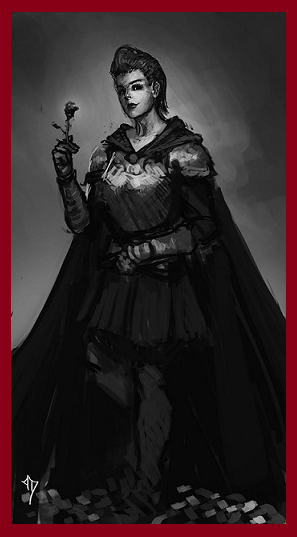
Sobriquet: The Knight of Roses
Appearance:
Background:
Domain:
Personality:
Current Events:
- -- <<Efigénia Campos' Statistics>>
Leonardo Ferreira -- Toreador armorer and smith of Rio de Janeiro
Appearance:
Behavior:
History:
Recent Events:
- -- <<Leonardo Ferreira's Statistics>>
Zezé Rios -- Bardo das Areias (Bard of the Sands)
Appearance:
Background:
Domain:
Personality:
Current Events:
- -- <<Zezé Rios' Statistics>>
Brenda Maier -- Progeny of Zezé Rios
Appearance:
Behavior:
History:
Recent Events:
Fiacre Sauvageot -- O Cisne Selvagem (The Savage Swan)
Appearance:
Behavior:
History:
Recent Events:
- -- <<Fiacre Sauvageot's Statistics>>
 A Corte das Sombras: The Lasombra {6}
A Corte das Sombras: The Lasombra {6}

Sobriquet: Rainha do Carnaval / Queen of the Carnival.
Appearance: A pale Hidalgo beauty embraced in her late teens, with white blond hair and eyes of the palest blue.
Background: She is the original childe of Don Fidel Ismael Maximiliano de Lisbon.
Domain: The 'Leme' neighborhood of Zona Sul (South Zone).
Personality: She exudes a subtle but insidious influence over her courtiers.
Current Events:
Cristóvão de Silva -- O Cavaleiro das Trevas (knight of the shadows)
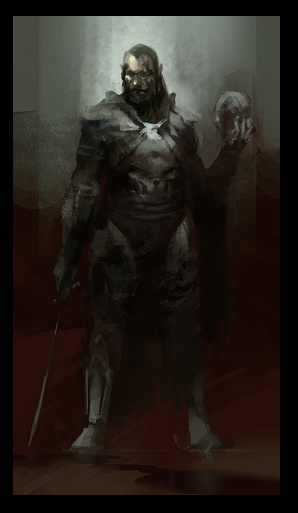
Sobriquet: The Knight of Shadows.
Appearance:
Background:
Domain: The Queen's eldest childe havens near his sire in the neighborhood of Leme.
Personality:
Current Events:
Pai Celestino -- O Sacerdote de Cinzas (priest of ashes)
Appearance:
Background:
Domain:
Personality:
Current Events:
Anacleto a Astúcia -- O Feiticeiro das Sombras (the wizard of shadows)

Sobriquet: The Wizard of Shadows
Appearance:
Background:
Domain:
Personality:
Current Events: Cassandra Fonseca owes Anacleto a 2pt boon for finding her sire for her and she gave him a lock of her hair to divine who her sire is, and providing her details on her bloodline.
Wilfredo Rosario -- O Filho Pródigo (the prodigal son)
Appearance:
Background:
Domain:
Personality:
Current Events:
Fabiana Belo -- A Bela Jovem Turco (the beautiful young Turk)
Appearance:
Background:
Domain:
Personality:
Current Events:
- -- <<Fabiana Belo's Statistics>>
Os Tribunais de Menores: The Lesser Court of Blood
 Os Animais - Beasts
Os Animais - Beasts
Vasco Almeida -- Elder Gangrel of Rio
Appearance:
Behavior:
History:
Recent Events:
- -- <<Vasco Almeida's Statistics>>
Duarte Estéves -- American City Gangrel Antitribu in Rio
File:City gangrel antitribu duarte estéves.png
Name: Duarte Estéves
Sobriquet: Dudu (the diminutive of Duarte)
Appearance:
Background:
Domain:
Personality:
Current Events:
 Os Cobras - Snakes
Os Cobras - Snakes
- -- Danilo Palmeiro (deceased - April 2006)
 Os Enganadores - Deceivers
Os Enganadores - Deceivers
Hugo Satrix -- Neonate & Master Pickpocket
Appearance:
Background:
Personality:
Current Events:
 Os Feiticeiros - Sorcerers
Os Feiticeiros - Sorcerers
Quote: "Always two, there are. No more, no less. A master, and an apprentice." -- Master Yoda -- Episode I: The Phantom Menace.
Úrsula Henriques -- Regent of Rio de Janeiro
Sobriquet:
Appearance:
Background:
Domain:
Personality:
Current Events:
Kenshin Kita -- Apprentice of the Second Circle
Sobriquet: Apprentice of the Second Circle
Appearance:
Background:
Domain:
Personality:
Current Events:
- -- Kenshin Kita -- The Japanese Apprentice
 Os Leprosos - Lepers
Os Leprosos - Lepers
Pai Celio
Appearance:
Behavior:
History:
Recent Events:
- -- <<Pai Celio's Statistics>>
 Os Necromantes - Necromancers
Os Necromantes - Necromancers
Ruggiero Leonzino
Sobriquet:
Appearance:
Background:
Domain:
Personality:
Current Events:
 Os Sangues Azuis - Blue Bloods
Os Sangues Azuis - Blue Bloods
- -- Therèse Maurier -- Elder of Ventrue of Rio de Janeiro.
- -- Severina Belo (antitribu)
- -- Clementina Ventura (antitribu)
- -- Marisa Gomes (antitribu)
 Os Sarracenos -- Saracens {7}
Os Sarracenos -- Saracens {7}
Ridha Kader -- Moroccan Elder (warrior caste)
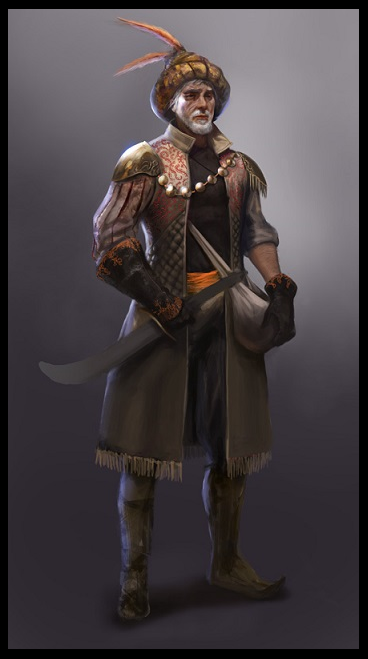
Sobriquet: He is affectionately called Father by the other dissident Assamites of Rio de Janeiro for the care and attention that he showers upon his adopted progeny.
Appearance:
Behavior:
History:
Recent Events:
Babajide Afolayan -- Yoruban Ancilla (warrior caste)

Sobriquet: Affectionately called the Lion-King by his fellow Assamites for the proud swagger that marks the unconscious confidence of a king or Prince.
Appearance:
Behavior:
History:
Recent Events:
Sawsan Hakim -- Arabian Neonate (warrior caste)
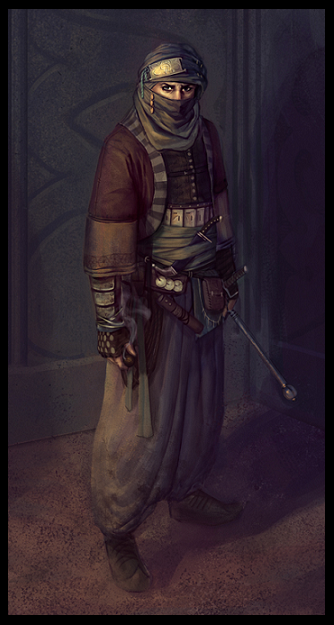
Sobriquet: Flower of the Desert or just plain Lily.
Appearance:
Behavior:
History:
Recent Events:
Eren Demir -- The Astrologer

Sobriquet: The Astrologer or Star-struck
Appearance:
Behavior:
History:
Recent Events:
Jason Maier -- The Dark Knight -- Assamite Neonate (vizier caste)

Sobriquet: Apparently, he's the Dark Knight. Christian Bale can kiss his ass. Recently among the other dissident Assamites, he has come to be called the Steward, a nickname that references his mortal last name - Maier, which is a southern German variant of mayor, or one who looks after a village.
Appearance: Short, long hair. His skin's a little different from your average vampire, he looks like he's been out working in the sun for a few days and has a nice healthy tan.
Background: With a brief stint in the army and a more extended stint in the world of tech support, he caught the eye of Masood Ajam. After long discussions about the nature of technology, and more then a few nights of drunken discussion, he went to India and was embraced. After a madcap learning spree, he was taken to a hotel for an unknown reason and woke up.
At least, that's what he remembers.
Personality:
Current Events:
Currently, he's building a nice little middle class existence in the suburbias of Rio, scamming a few people here and there and laying groundwork for emergency havens.
Christinana Guillory -- First Childe of Jason Maier -- Neonate (vizier caste)
Sobriquet: The diminutive of her given name, thus Tina.
Appearance:
Behavior:
History:
Recent Events:
Anselmo -- Assamite antitribu Ancilla (warrior caste)
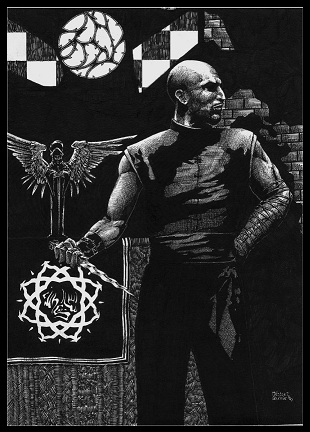
Sobriquet: A Barata - the knife in Portuguese.
Appearance:
Behavior:
History:
Recent Events:
 Tzimisce - Fiends {1}
Tzimisce - Fiends {1}
File:Tzimisce Gabi Alexandrescu.png
Sobriquet:
Appearance:
Behavior:
History:
Recent Events:
 Os Tolos - Fools
Os Tolos - Fools
Mister Cocoa -- And of course, his evil White Rabbit!
Appearance:
Behavior:
History:
Recent Events:
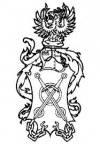 Os Guardas da Lei: The Brujah: The Order of the Constabulary
Os Guardas da Lei: The Brujah: The Order of the Constabulary
- -- Netuno
- -- Salomão Machado -- Elois sire of the neonate Cassandra Fonseca
- -- Cassandra Fonseca -- Brujah Cop and childe of Salomão Machado
- -- Luitger Fürst - German Expatriate (Late 2016)
- -- Kayetan Schulte -- German Officer & S.S. Doctor
 Samedi -- Stiffs
Samedi -- Stiffs
Mama Brigette
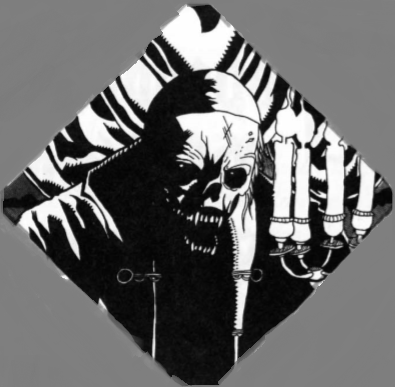
Sobriquet: In centuries past, on another continent, she was called by another name: Troglodytia.
Appearance:
Background:
Domain:
Personality:
Current Events:
- -- <<Mama Brigette's Statistics>>
Emily Elliott
Appearance: Oh...God...(followed by the sounds of noisy vomiting)
Background:
Domain:
Personality:
Current Events: Trades The Grave's Decay to Brenda for Nigrimancy.
 Tlacinque
Tlacinque
Xiloxoch -- The Night Flower
Os Bastardos do Rio - The Caitiff
- [[]]
- Name:
- Sobriquet:
- Appearance:
- Background:
- Domain:
- Personality:
- Current Events:
Estrangeiros do Sangue - Foreign Vampires
As Sociedades Estranhas - The Sects
Aqueles caído para a Segunda Morte - Those who have fallen to the Second Death
- [[]]
- Name: Don Fidel Ismael Maximiliano de Lisbon
- Sobriquet:
- Appearance:
- Background:
- Domain:
- Personality:
- Demise:
Contos de Mortos-Vivos - Stories of the Kindred
- A Letter for the King - September of 2001
- Along Came A Spider - Summer 2002
- The Emerald Mask - September 2031
Diários do vampiro - The Vampire Diaries
Os Outros: The Others
- -- Octavia -- Ananzi party-girl
- -- Jurou Yukimura -- Yakuza front-man in Rio de Janeiro & Kuei-jin
Um Léxico: The Dictionary
Baile: A dance party hosted by a local favelas.
Bairro: Portuguese for neighborhood.
B.O.P.E: In Portuguese (Batalhão de Operações Policiais Especiais), the Special Police Operations Battalion of the Rio de Janeiro Military Police.
Cariocas: The residents of Rio de Janeiro.
Cemitério: Portuguese for cemetery.
Favela: is the generally used term for a shanty town in Brazil.
Favelização: "favela growth" or "favelisation".
Moradores da favela: The term used for those who live in the favelas, also known pejoratively as favelados.
Websites
http://babynamesworld.parentsconnect.com/aztec-names.html
http://travel.nationalgeographic.com/travel/city-guides/rio-de-janeiro-walking-tour-1/
http://www.myanmarvisa.net/best-places-to-live-in-rio-de-janeiro/
http://www.riojiujitsuguide.com/rio-neighborhood-guide/
http://marciokenobi.wordpress.com/category/cities/
http://en.wikipedia.org/wiki/Rio_de_Janeiro
http://wikitravel.org/en/Rio_de_Janeiro (*****) - Over-all
http://www.tripadvisor.com/Attractions-g303506-Activities-Rio_de_Janeiro_State_of_Rio_de_Janeiro.html (****) - Places
http://maherartgallery.blogspot.com/2012/06/edson-campos-1955-rio-de-janeiro-brazil.html (*****) - Art
http://brazilian-coast.com/en/rio-de-janeiro-rj
http://www.stanford.edu/group/spatialhistory/cgi-bin/site/viz.php?id=143&project_id=0 (*****) - Scholastic
http://www.city-data.com/world-cities/Rio-de-Janeiro-History.html (****) - History
http://www.lonelyplanet.com/brazil/rio-de-janeiro/history (***) - History
